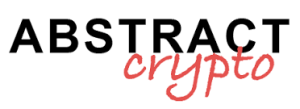The year 2024 marked an impressive growth for the economy of Circle (USDC), which established itself as a central platform for global trade and financial innovation.
Let’s see in this article how Circle is transforming payments and promoting economic prosperity at the same time.
Extraordinary growth in 2024: Circle (USDC) as the engine of the digital economy
The ecosystem of USDC continues to lead the evolution of global finance, demonstrating its potential as a central platform for digital commerce and inclusive payments.
With a growth of 78% in the last year and a monthly transactional volume of 1 trillion dollars just in November 2024, USDC is establishing itself as one of the most important tools in the stablecoin landscape.
The expansion of USDC is evident not only in the numbers, but also in its ability to meet the needs of millions of users around the world.
Thanks to strategic partnerships with digital exchanges, banks, and wallets, over 500 million wallet products currently support USDC.
This allows for a wide range of applications, from the crypto capital markets to international payments, promoting a transition towards a more inclusive digital economy.
A crucial aspect is the accelerated adoption driven by three key factors. The first is regulatory clarity. The emerging rules on stablecoin are indeed creating stronger standards, strengthening trust among consumers and financial institutions.
The second is the scalability of blockchains: the infrastructures are improving, allowing faster and low-cost transactions. Finally, the improved user experience.
The developers are indeed simplifying the use of technology, making it accessible even to the less experienced. USDC is also building connection points that are increasingly solid with traditional finance.
The global banking network of Circle continues to expand, offering direct access to USDC in numerous financial centers.
The new on-ramp and off-ramp solutions allow for more efficient traditional payments, including global salaries, payments to suppliers, and international remittances.
This evolution is reminiscent of the transition era from dial-up internet to broadband. Just as the web made information accessible to billions of people, USDC and the Circle network are making the transfer of value equally simple and instant.
A more inclusive financial system
The growth of USDC reflects a broader trend towards openness and inclusivity in finance.
In emerging markets, where access to traditional financial services is limited, digital dollars are contributing to a rapid transition from cash to digital payments. USDC not only provides a reliable alternative, but also helps bridge the technology gap.
According to recent research, 65% of executives in the payments sector consider it crucial to expand the infrastructure for instant payments.
However, traditional systems are still slow to adapt. USDC, with its low fees and high speed, represents an ideal solution to tackle these challenges, providing a foundation for a more fair and accessible economic system.
In any case, the objective of Circle is not only to innovate the financial sector, but to promote global economic prosperity.
The company has committed to building a platform that combines speed, low costs, and programmability, using the potential of blockchain to redesign the exchange of value on a global scale.
Jeremy Allaire, co-founder and CEO of Circle, has indeed stated the following regarding this:
“The transformation that open and high-speed networks can bring is difficult to overestimate. We are working to create a frictionless financial system that promotes fair access for all.”


